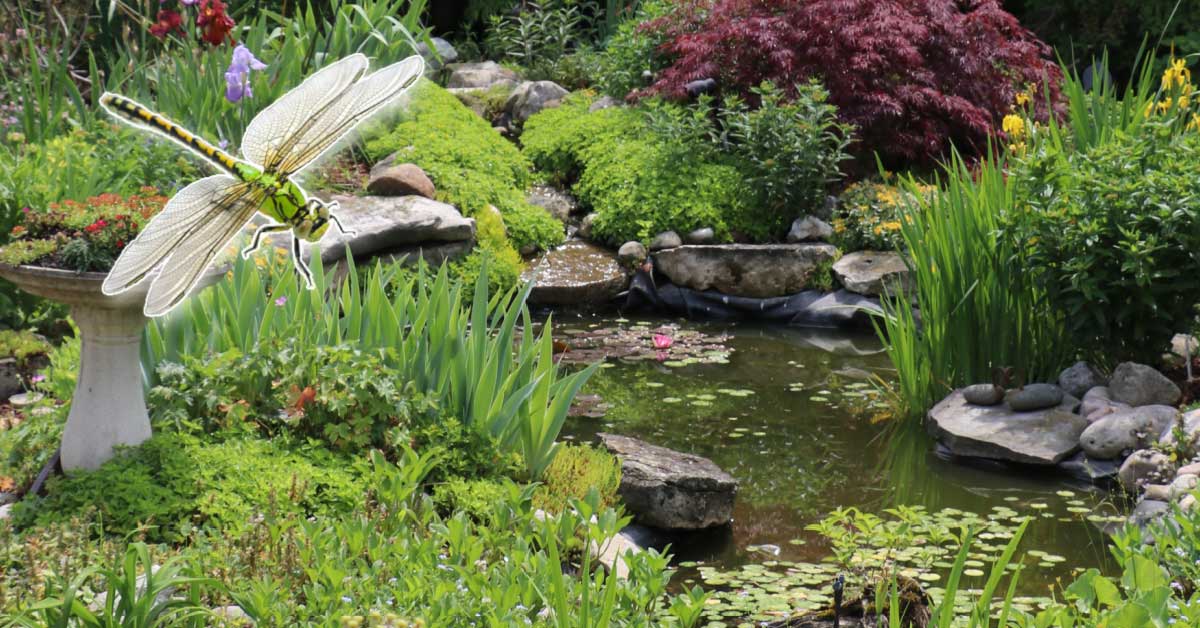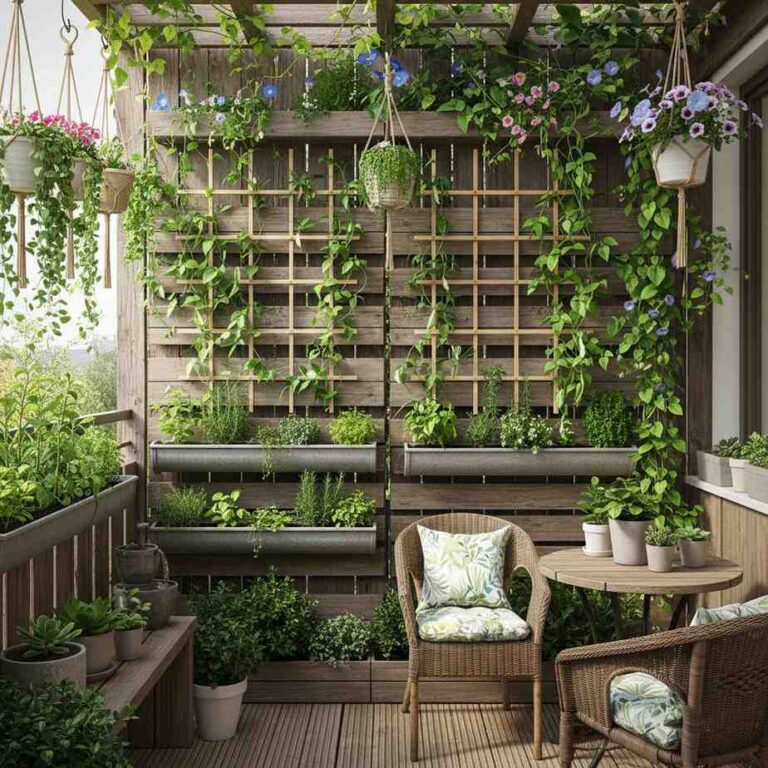Transcripts
interviewer:
Chris, it’s nice to have you on YouTube videos and I’m very happy to see this garden in person. I’ve seen versions of it from your books and slides. It’s amazing how the entire front garden has been transformed into almost water and wildlife. It’s different from the normal one.
My dad, who was a sportsman and squash player in the 90s, read your book and really hit me. He never did much gardening, but he transformed his front yard into a lovely wildlife space with a large pond, which gave him endless joy. Just hearing the birds, it’s clearly a great idea.
When did that lightning moment happen for you? When did you think the right front yard, water, wildlife?
Chris Baines:
Well, there’s a negative aspect to that. I spent quite a lot of my young people cutting in the park and spending my time on the lawn.
interviewer:
So do you actually have a mowed lawn?
Chris Baines:
Oh yeah, I mowed the lawn. I wrote down a lawn mower in the Sheffield Parks department when I was 18 years old. Nobody taught me how to stop it. I drove it straight into the river! Hopefully they’ve forgotten.
The problem is, this is a small garden in the middle of Wolverhampton, very urban. But it is lush with the Victorians planting lots of street trees. What I wanted was that the space outside the window changed over the season.
At the time I was trained as a gardener, but then as a landscape architect and the evergreen groundcover was big. However, I was working in a retirement home. There, I didn’t know if it was January or July. After that, I worked in a residential area in the city. In the 80s it’s a really tough place for Brixton and Hackney. Same thing: There is no sense of the season.
I wanted a garden that told me it was January or February, but there were some subtle changes throughout the year. That’s what this garden does. The Pond provides feedback every day. Open the blinds and check if it is raining or matte.
So this garden really is to take the British countryside into the middle of the city. Especially the sense of seasonal changes. So when the wooden anemones start to pass, I’m excited, Primulos is everywhere, but the bluebells have not yet bloomed. That subtle shift – I love it. And that’s what we’ve lost from the wider landscape.
interviewer:
And that’s much lower maintenance. I love the way the water bounces off the light – it really adds so much. Do you think water is the best addition to wildlife?
Chris Baines:
yes i will. It’s just thinking about where your garden will fit. You can only achieve so much in a garden of this size, but once you start looking at it as a kind of service station for a wider landscape.
interviewer:
I love that analogy – you’ve always used it. Like a small filling station connecting the green areas.
Chris Baines:
that’s right. There are about 30 homes on this street, and perhaps a house for five has a pond. When we moved, one neighbor, Ruth, had a few doors, and we already had one. Her small front lawn is currently full of Fritillaries. I’ve been encouraging them for over 30 years.
But next to it, it’s all grass. So I don’t have a lawn, but the song thrush collects the mud from their nest here and finds their insects next to them. What’s important is the habitat mosaics.
Lost the medieval pattern of hedges and small fields from the countryside. But in this kind of neighborhood, my garden is just a vacant lot in the city woods. That’s why birdlife is so rich. These are forest birds as far as they are concerned.
interviewer:
And your hedge – I realized it was a coniferous hedge. I was surprised to hear you praise it. Most people consider them to be overly dominant.
Chris Baines:
Yes, I’m an optimist. We inherited the hedge so what can I do with it? I might have planted beech or horn beams for more seasonal variations, but since there is a Raylandi hedge, I grew Holly and Ivy to add texture and interest.
There are always blackbirds and hedge sparrows that provide shelter and enclosures and nest there. It’s part of the whole thing.
interviewer:
And your Daphne Mezereum – it is beautiful. I didn’t realize it was native.
Chris Baines:
that’s right! And it has a glorious fragrance. In a small garden like this, scent is really important. Just off the main entrance is a glorious winter honeysuckle for weeks. People don’t realize that native plants are so lovely.
The primuroth is amazing. Ruth’s Fritillary is native. I have a glorious honeysuckle in a distant hedge that blooms until summer. moths love it, then bats eat moth.
interviewer:
So, how much maintenance do you think it takes for this part of the garden except for the back where you grow vegetables?
Chris Baines:
Not much. People say they want flowers all year round and low maintenance. This checks both more or less.
I spend a few hours in the pond. Protects the frontier plants, draws out green slimes in hot weather, and fights ducks. But perhaps a total of 6 hours a year.
When you use oxygen and snails to properly plant, it is primarily self-cleaning. Use lower soil at the bottom of the pond. People are always surprised. But dragons need that muddy bottom to develop. They live there for two of three years.
interviewer:
And you didn’t need to clean it up?
Chris Baines:
Until the leak occurs about 20 years later. The liner was dead and had to be replaced. It was highly maintained! However, this new pond is now about 15 years ago.
interviewer:
And around the pond you have woodruffs, wooden anemones, primuros – it is beautiful.
Chris Baines:
Yes, and I only go there once a year to pull out sycamore seedlings. Otherwise, the shade will control most weeds. Hellebores and snowflakes give winter interest.
interviewer:
It’s a very easy-to-use garden. I love the front chair and its dry stone walls –
Chris Baines:
I made it! Everything from the stones lying around the garden, with friends. We needed a level terrace outside the French door. It’s full of gaps, so Newt will be in winter there. The walls link different parts of the garden together.
interviewer:
Total Maintenance – Probably not enough?
Chris Baines:
that’s right! It’s about timing. I was away and missed out on planting this year’s wallflower. I just planted a lot of alliums and to protect them from squirrels, I covered them with a net.
interviewer:
I tried cayenne pepper on me –
Chris Baines:
I’ll do the same thing too! Squirrels can be a problem, especially in parks. They damage the trees very badly. However, the garden needs maintenance. If I let this go wild it would all be Sycamore and Bramble.
There is a difference between gardens and wider scenery. And re-wilding in the right place has made incredible progress. For example, Knepp.
They now have a purple emperor butterfly. I’ve never seen it! They were once confined to arborists, but they thrive in the scrub forest.
That scrub also rebuilds the soil and stores carbon. Therefore, regenerating things naturally can make a huge difference.
interviewer:
It emphasizes the damage caused by fertilizers and pesticides.
Chris Baines:
Yes, and I trained during the revolution of the 1960s. Our chemistry professor proudly said that he helped us invent the DDT.
Now I look back and wonder. No artificial fertilizer is used here. The nitrogen cycle works naturally. Gardeners believe they have to feed everything, but that is not true.
These nutrients are washed away by the river. Look at the River Wy. Enter from the chicken farm. The salmon is gone. But people don’t see connections.
In the garden, you can begin to rebuild your understanding of how everything is linked.
interviewer:
That’s true – even things like cat populations affect birds.
Chris Baines:
Yes, there are a huge number of cats around here. I’m amazed that the song’s Thrush and Robbins still manage. But that’s the point. It helps you realize these things, such as how ponds connect to walls and nests, and understand the larger ecological issues.
interviewer:
Attractive. Thank you very much, Chris. It was wonderful to see your garden. And we were also very good!
Chris Baines:
thank you. It’s wonderful to be greeted here.





